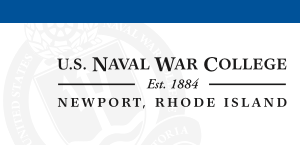Naval War College Review
Volume 65, Number 4 (2012) Autumn
An exercise of sea control, 5 September 1781: a French fleet under the comte de Grasse drives a British force under Sir Thomas Graves from the mouth of Chesapeake Bay long enough to allow transports carrying supplies and French and Continental reinforcements to reach General George Washington’s besieging troops at Yorktown, Virginia. The subsequent surrender there of the British troops under Lord Cornwallis led to the peace treaty that ended the war and established the independence of the United States. Our lead article, by Robert C. Rubel, analyzes the potential modern usage of such terms as “command of the sea” and “sea control.”
Full Issue
Autumn 2012 Full Issue
The U.S. Naval War College
From the Editor
From the Editors
Carnes Lord
President's Forum
President’s Forum
John N. Christenson
Articles
Command of the Sea: An Old Concept Resurfaces in a New Form
Robert C. Rubel
Between Peace and the Air-Sea Battle: A War at Sea Strategy
Jeffrey E. Kline and Wayne P. Hughes, Jr.
Building the Purple Ford: An Affordable Approach to Jointness
Robert P. Kozloski
Drowning Stability: The Perils of Naval Nuclearization and Brinkmanship in the Indian Ocean
Iskander Rehman
German War Gaming
Milan Vego
Book Reviews
Maritime Private Security: Market Responses to Piracy, Terrorism and Waterborne Security Risks in the 21st Century
Martin Murphy, Claude Berube, and Patrick Cullen
Pirate Hunting: The Fight against Pirates, Privateers, and Sea Raiders from Antiquity to the Present
Jack Gottschalk and Benerson Little
Terror, Security, and Money: Balancing the Risks, Benefits, and Costs of Homeland Security
Andrew L. Stigler, John Mueller, and Mark G. Stewart
The U.S. Coast Guard’s War on Human Smuggling
David L. Teska and Dennis L. Noble
The Military Lens: Doctrinal Difference and Deterrence Failure in Sino-American Relations
David Burbach and Christopher P. Twomey
Sun Tzu and the Art of Business: Six Strategic Principles for Managers
Judy Malana and Mark R. McNeilly
Military Brass vs. Civilian Academics at the National War College: A Clash of Cultures
Thomas Nichols and Howard Wiarda
The Making of the Modern Admiralty: British Naval Policy-Making, 1805–1927
K. D. Logan and C. I. Hamilton
Unbroken: A World War II Story of Survival, Resilience, and Redemption
Richard Norton and Laura Hillenbrand
Reflections on Reading
Reflections on Reading
John E. Jackson
Additional Writings
Strategic Trust and Cooperation
Paul A. Maddison
In My View
Rex A. Buddenberg

Credit
Battle of the Virginia Capes, by V. Zveg, oil on canvas, 1969, by permission of the Navy Art Collection, Washington, D.C. (accession number 69-581-A). The Navy Art Collection, within the Naval History and Heritage Command, includes around twenty thousand paintings, drawings, prints, and sculptures depicting naval history from the sixteenth century to the present.
Design by Kelly Forst, Naval War College Visual Communications Department.

